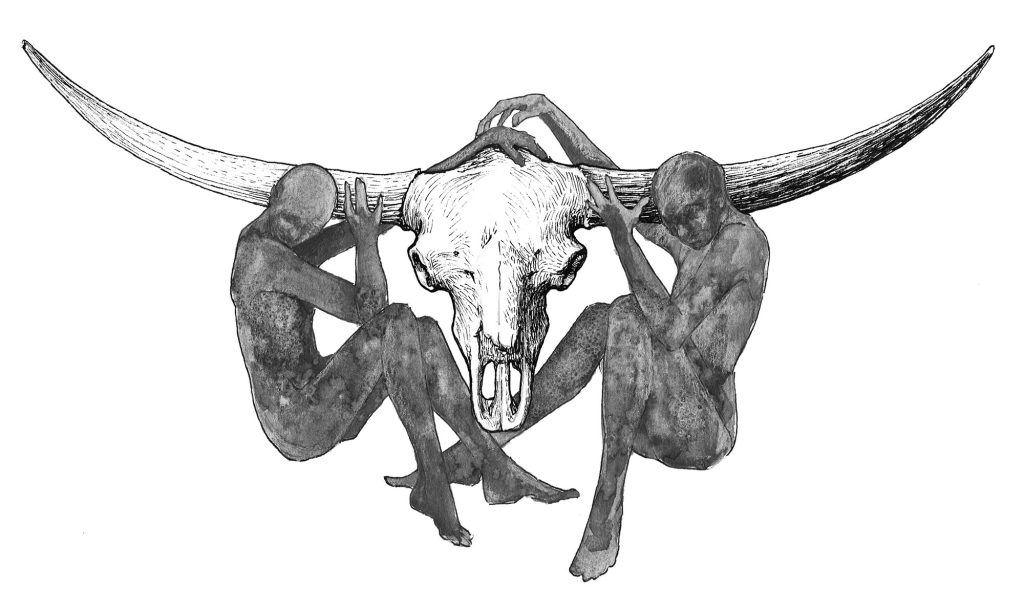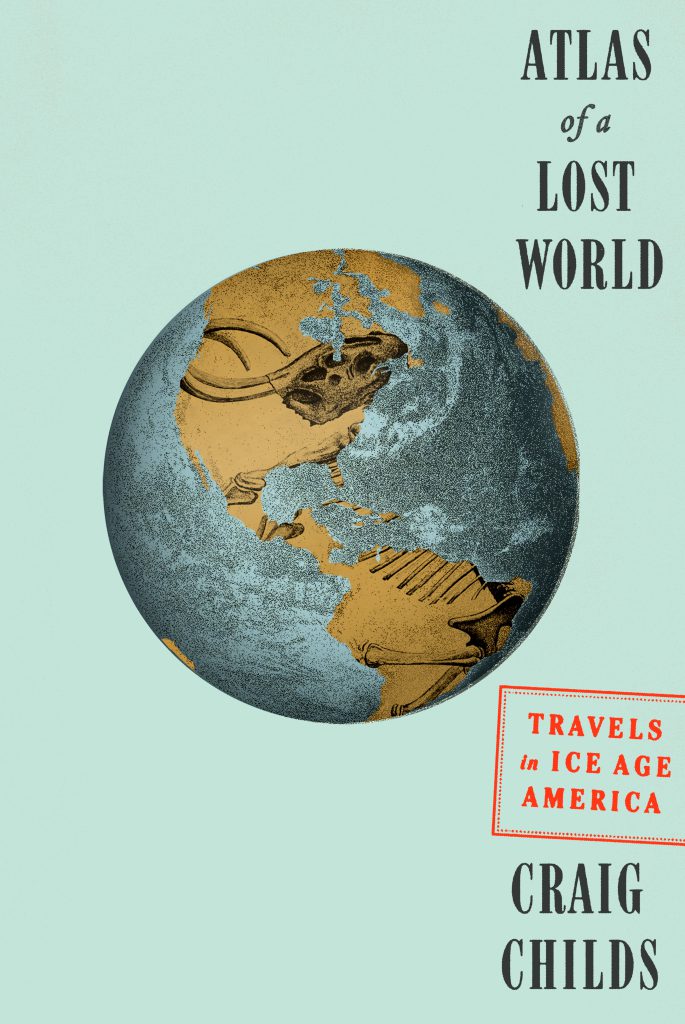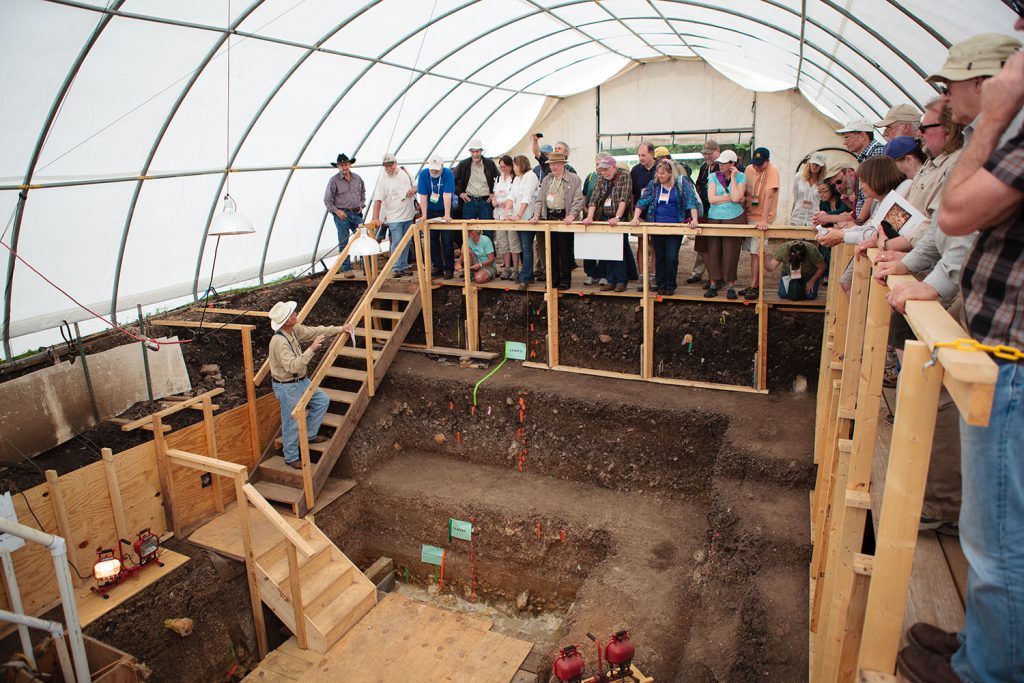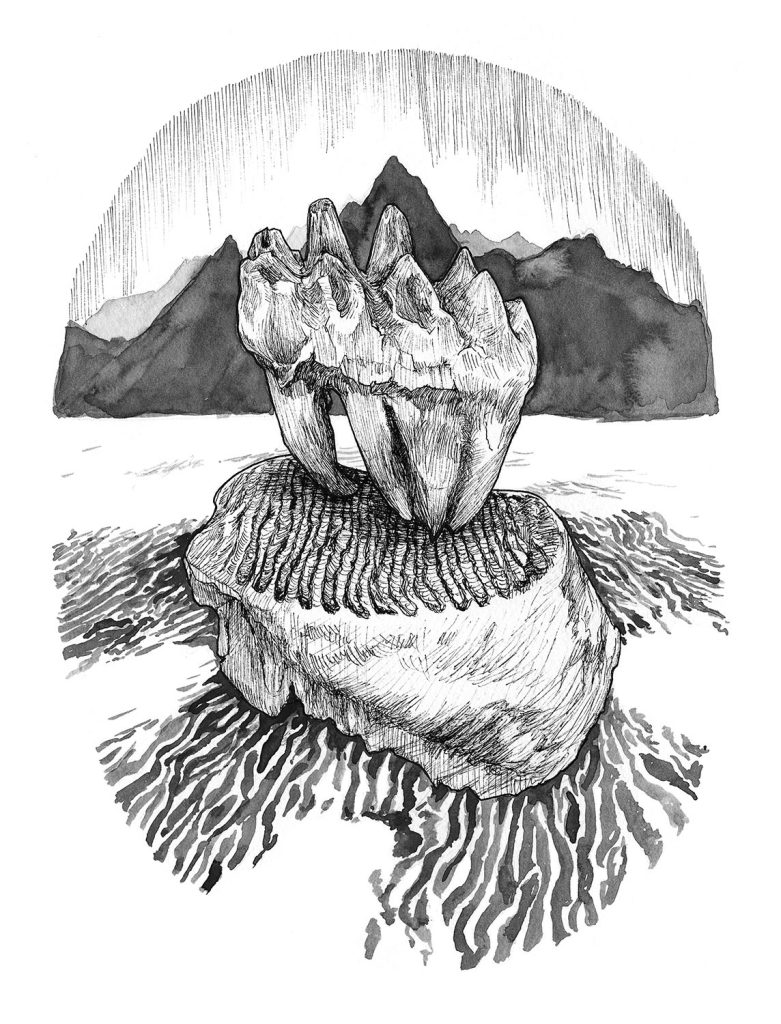In the Land of the Mammoth Eaters

In the oaken hills of central Texas between Austin and Waco, a spring rises along a tangled fence line, watercress waving downstream. Water comes up clear and clean, like diamonds running between willows and meaty cottonwood roots.
Even on dry years, Abbott Spring keeps a good flow, two to three liters per second from deep below the head of Buttermilk Creek. A short walk along the creek reveals dove-gray pieces of chert everywhere. You can’t walk without stepping on them. The kind of rock is called Edwards Plateau chert, a local outcrop popular for toolstone since the late Pleistocene. I know a modern knapper who comes here to collect rock to take home and fashion into stone projectiles. It’s one of his favorite toolstones to work with.
An archaeologist, the only one working the weekend shift at what is known as the Gault Site along Buttermilk Creek, showed me where butchered parts of a mammoth had been excavated and filled back in. Nearby was the site of a horse, a Pleistocene bison. Some of North America’s oldest, most well-stratified human dates have come from this site, dates as far back as 15,500 years ago. This was one of the earliest documented gathering places on the continent, material generated by people coming back over and over.
Buttermilk Creek is a hunting, butchering, and stone-gathering location holding the remains of so many stone tools left across so many thousands of years that the ground seems to be as much toolflaking as actual dirt. Charcoal, bones, and knapped rock from the 15,500-year-old horizon up to the historic Comanche people constitutes earth.
The Gault School for Archaeological Research out of Austin, Texas, has a central dig under a white tent that looks like a religious revival in a grassy field between oak bosques. Fifteen thousand years ago, this land was 1,200 miles south of the ice cap. It was temperate, environmentally similar to what it is now. The spring would have flowed about the same, toolstone being struck, crystalline sounds ringing through oaks, the music of the first people. A camp near a spring at the head of a creek with good toolstone would have meant the scent of smoke drifting through woods, and you would have heard human voices, languages brought down from Siberia, or perhaps carried over from the Iberian Peninsula, beyond the Atlantic, as some researchers believe.
The oldest clear sign, so far, of architecture in North America was discovered just across the field from the tent. The floor plan indicates a rectangular layout, the distribution of artifacts made of stone and bone revealing an outline of walls, an entrance, a cooking and eating area. A floor plan as defined by archaeologists contains the shadow of living. If I’d ducked into this rectangular hut all those thousands of years ago, I’d most likely have been overwhelmed by the smell. To them, it would have been the scent of home: wood smoke, meat and skins, and family—a refuge from woodlands full of mammoths and saber-toothed cats.
Home is a shape, a space, and for the people at the head of Buttermilk Creek it had square walls. The structure was dug into the ground with a fire pit inside, its floor plan divided into tasks, an orderly arrangement.
Similarly laid-out Paleolithic footprints have been found in Europe, rectangles dug in with fire pits and artifacts in the same positions, entrances designed the same. This was pointed out to me by Michael Collier, one of the senior archaeologists at the Gault Center in Austin. Collier opened plan-maps from these European sites, showing shapes and artifact distributions similar to what has been excavated at Buttermilk Creek. He said what puzzled him was that the Texas site he excavated is older than those in Europe.
I asked, “You mean they could have been moving from here to there?”
Collier leaned back from the maps and said, “You said it, I didn’t.”
The question of where people went, when, and how could find answers in a pit like this; tools tell origin stories, bones of animals speak to meat and fire.
Near the entrance of the tent at Buttermilk Creek is a signpost with three arrows pointing different directions. One is marked “Iberian Peninsula,” the other “Siberia,” and the third “Monte Verde,” in Chilean Patagonia. These are three key locations for the nascent Americas, the Iberian Peninsula being a reference to a possible arrival of people from Paleolithic Spain, Siberia pointing back to the land bridge, and Monte Verde referencing an anomaly on Chile’s southern coast. The signpost felt like a collective sigh from the archaeological community: We’re not sure where everyone came from—maybe everywhere.
A Columbian mammoth would have been dappled in shadow, standing still, waiting out the afternoon head-deep in the shade of the oaks. Its tusks would have been raised high off the ground. The slightly smaller mastodon has tusks that curve gently forward. The Columbian mammoth’s tusks bow outward and then curve back in, almost touching, like a Valentine heart.
The big white tent through draping plastic doors was cavernous, a lab and temporary artifact storage focused around an excavation pit almost 20 feet deep. Fans whirred and a generator ran outside, pumping water from the excavation so it wouldn’t fill up like a swimming pool from groundflow.
A wooden stairway had been built from fresh lumber, the wood unfinished, everything screwed together so that this place could eventually be taken apart again, the hole backfilled, grass grown back into a pasture where livestock would graze, knowing nothing.
The uppermost excavated horizon was the size of a living room. Down through tiers, the pit became smaller, passing into older dates, arrowheads and small points belonging to post-Columbian Indians, Comanches. Below them were mound builders, woodland hunter-gatherers from a thousand years ago, people who would not have known of Europe. Another few steps, and I was at eye level with layers of Archaic big-game hunters from the cooler interior of the Holocene, 6,000 years ago. Down the wooden stairs, flakes and bits of charcoal stuck out of walls, the leavings of people returning over and over for the goodness of this spring and its Edwards Plateau chert. Below them were Paleoarchaic hunter-gatherers who also knew of this chert, learning of it from those before them, the Pleistocene people, the mammoth eaters.
The stairs continued down past nails tied with bright string marking study grids, damp dirt walls becoming soaked the lower I went. The water table came up around me, bones of horses and mammoths found in layers, part soil and part water. At 13,000 years ago, I was in the Clovis age, the rise of the great mammoth hunters, long thought to be the first people in North America. Their unique stone-tool technology swept the continent like wildfire. I descended deeper into human occupation, 14,000 and 15,000 years old—the pre-Clovis layers of Buttermilk Creek, which have produced 15,528 artifacts in the form of broken pieces of tools, rock flakes, projectiles, and worked bone, proof that Clovis was not first.
At the bottom of the pit, a wood plank was up on blocks above standing water. The plank bowed under my weight, touching the oldest, muddy human horizon, last of the worked stone, sterile soil below. The bottom date at Gault has reached 15,500 years old, a solid time frame for human arrival in this part of Texas.
Clear plastic bags were in a bucket, each numbered, each holding a rock flake that had been found in this deepest horizon. I thumbed through to the bottommost artifact, a humble chert core knocked around the edges to get it down to a workable carrying piece. I opened the bag and slid the worked stone into my hand. It was a discard, something the toolmaker had thrown aside. Maybe the particular rock wasn’t liked, had too much patina on one side, or was too thick in the middle. It could have been picked up and worked again, but it was forgotten. Almost as big as my palm, it was heavy, and sharp enough it could have cut flesh. My hand wrapped around its cool surface, slick and gritty. It felt amniotic, still wet from birth.



































